 Freedom was an English psychedelic rock band, active in the late 1960s and early 1970s, formed initially by members of Procol Harum.
Freedom was an English psychedelic rock band, active in the late 1960s and early 1970s, formed initially by members of Procol Harum.
Ray Royer and Bobby Harrison, who had performed on the hit Procol Harum single “A Whiter Shade of Pale”, were kicked out of the Harum by vocalist Gary Brooker, and replaced by Robin Trower and Barry Wilson. Royer and Harrison then formed Freedom with Steve Shirley and Tony Marsh, who was immediately replaced by pianist / organist Mike Lease, releasing two German singles and the soundtrack for the Tinto Brass/Dino de Laurentiis film Attraction (original title Nerosubianco, also known as Black on White).

In 1968, Harrison entirely overhauled the group’s membership, and the new line-up began recording with more of a hard rock sound, scoring tour dates with Black Sabbath, Jethro Tull, and The James Gang. They achieved renown for their version of the Beatles song “Cry Baby Cry” on their second album Freedom at Last. Further line-up changes occurred before the band finally splintered in 1972, with Harrison going on to Snafu.

A spin-off of Procol Harum, Freedom was formed by guitarist Ray Royer and drummer Bobby Harrison. Both of them were in Procol Harum’s lineup at the outset for their debut “A Whiter Shade of Pale” single, but were ousted almost immediately when Procol singer, Gary Brooker, enlisted his former bandmates from the Paramounts, Robin Trower and Barry Wilson, as replacements. Freedom’s early sound, perhaps unsurprisingly, echoed Procol Harum’s in its prominent use of organ and piano, as well as heavy rock guitar, and like Procol Harum’s early records, captured late British psychedelia as it was starting to inch toward progressive rock.
Freedom wasn’t a Procol Harum clone, though, with a somewhat poppier take on psychedelia that was closer to Traffic than Procol Harum. Their initial lineup only released two singles in 1968 before breaking up, also recording a soundtrack for an obscure Italian film by Dino De Laurentis, Attraction/Black on White. The soundtrack LP was given a limited release in Italy — so limited, in fact, that the group members themselves were unaware that it had come out. Recorded with noted future producers Eddie Kramer and Glyn Johns engineering, this was reissued on CD in 1999, and is actually a pretty good if derivative slice of late-’60s British psychedelia.

In 1968, Harrison decided to reorganize the band completely — in fact, so totally that he was the only remaining original member. More albums came out in the late ’60s and early ’70s which, in keeping with overall British rock trends of the period, were in a much heavier, hard, bluesier style. These were middle-of-the-pack, or a little lower than the middle-of-the-pack, efforts with nothing to make them stand out from the crowd in a clogged field. They did get to tour the U.S. as support for Black Sabbath and Jethro Tull, and broke up in 1972 after some personnel changes. Harrison became the lead singer in the little-known Snafu, while guitarist Roger Saunders, from the later incarnation of the band, did some session work, joined Medicine Head, and played in Gary Glitter’s group during the ’80s. (by Richie Unterberger)

During 1969 the group released their second LP, titled “Freedom At Last”. (If they are generally confused in people’s memory with the rather more commercially successful group Free, this isn’t made any less by the latter band’s release of an album in 1972 bearing the exact same title!) This new album still had some leanings backwards in the direction of psychedelia while at the same time it pointed at what lay ahead for the future. Sadly, ” Freedom At Last” did only marginally better than “Nerosubianco/Black On White” and for more or less the same reason. It has never been out in the UK at all and only saw release in France (on the BYG label) and Germany (on Metronome). (Claes Johansen)

Freedom’s first album after drummer/singer Bobby Harrison totally revamped the lineup was typical lumpy British hard rock circa 1969, with nothing in the way of interesting songwriting or instrumental innovation to grab one’s attention. In a way, they made for an ideal support act for an emerging and insecure headliner; they weren’t going to upstage anyone. Sometimes they would leave off the generic blues-flavored hard rock for poppier or folkier material with harmonies, but melody and originality were not present in abundance. And it’s playing a losing game to record covers of the Beatles’ “Cry Baby Cry” and the Zombies’ “Time of the Season,” both of which had just been released, in much better and more popular versions of course, by the original artists; the Howlin’ Wolf covers don’t do the master much credit, either. (by Richie Unterberger)
German frontcover:

Some really good song ideas … but the album could have used a better mix and a more competent producer.
The song “Dirty Water” is not a Freedom song but of course the old Standells classic hit from the Sixites.

Personnel:
Bobby Harrison (drums, percussion, vocals)
Walter Monaghan (bass, guitar, piano, mellotron, vocals)
Roger Saunders (guitar, piano, mellotron, vocals)
+
Sam (piano on 06.)

Tracklist:
01. Enchanted Wood (Saunders/Monaghan/Hillmann) 3.03
02. Deep Down In The Bottom (Burnett) 4.26
03. Have Love Will Travel (Harrison) 3.52
04. Cry Baby Cry (Lennon/McCartney) 3.41
05. Time Of The Season (Argent/White) 4.54
06. Hoo Doo Man (Brown) 4.27
07. Built For Comfort (Dixon) 4.26
08. Fly (Monaghan/Hillman) 3.17
09. Never Loved A Girl (Shannon) 4.43
10. My Life (Saunders/Hillman) 2.48
11. Can’t Stay With Me (Saunders/Hillman) 4.15
12. Dusty Track (Saunders/Monaghan) 3.39
+
13. Dirty Water (Single B-side) (Cobb) 4.28
14. Ain’t No Chance To Score (Single A-side) (Harrison/Monaghan/Saunders) 4.33

German single:


 Traffic were an English rock band formed in Birmingham in April 1967 by Steve Winwood, Jim Capaldi, Chris Wood and Dave Mason. They began as a psychedelic rock group and diversified their sound through the use of instruments such as keyboards (such as the Mellotron and harpsichord), sitar, and various reed instruments, and by incorporating jazz and improvisational techniques in their music.
Traffic were an English rock band formed in Birmingham in April 1967 by Steve Winwood, Jim Capaldi, Chris Wood and Dave Mason. They began as a psychedelic rock group and diversified their sound through the use of instruments such as keyboards (such as the Mellotron and harpsichord), sitar, and various reed instruments, and by incorporating jazz and improvisational techniques in their music.
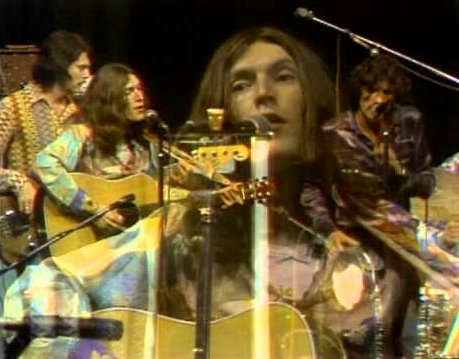

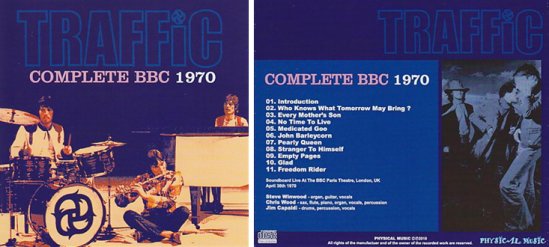
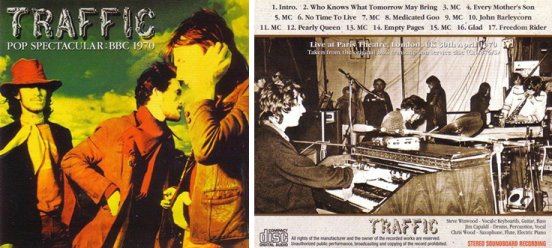
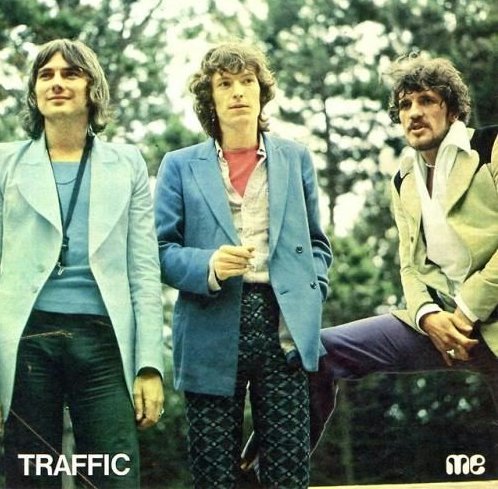
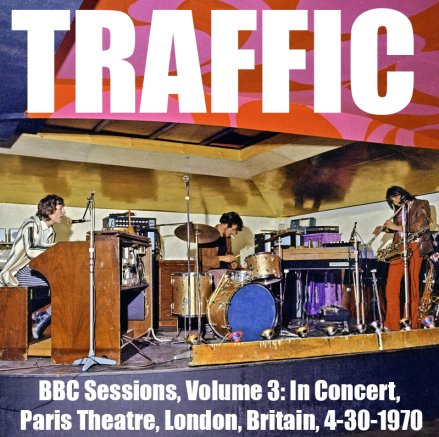


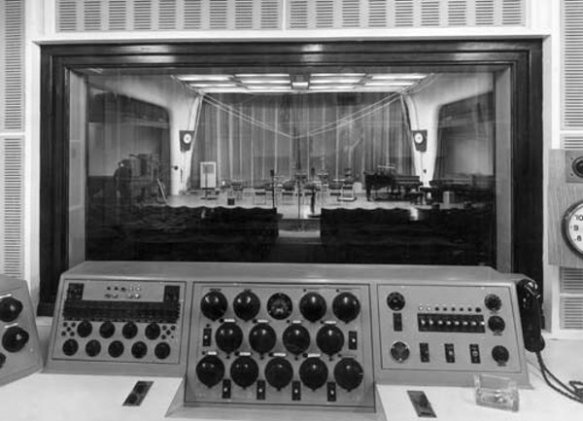

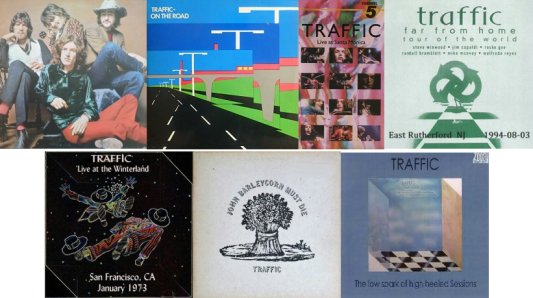

 Stanley Brian Reynolds (16 January 1926 – 14 April 2018) was an English jazz trumpeter.
Stanley Brian Reynolds (16 January 1926 – 14 April 2018) was an English jazz trumpeter.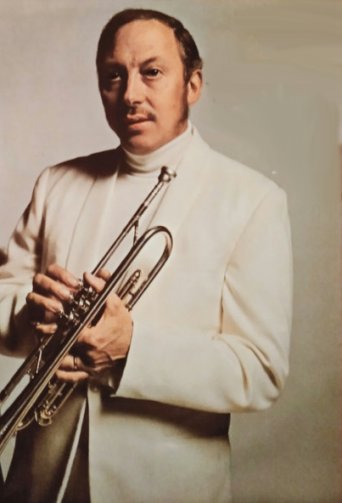
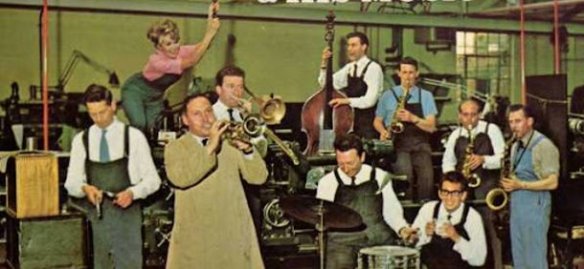
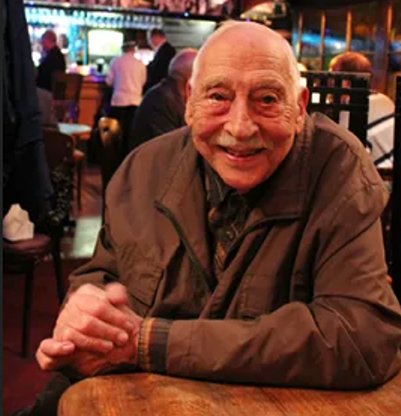

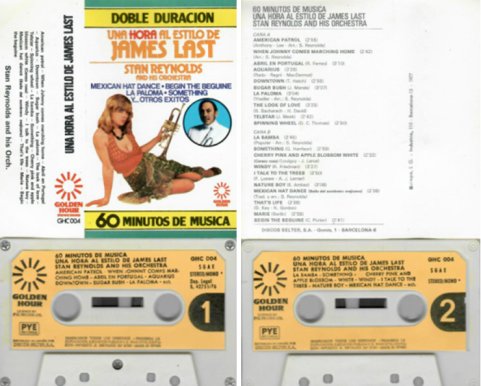


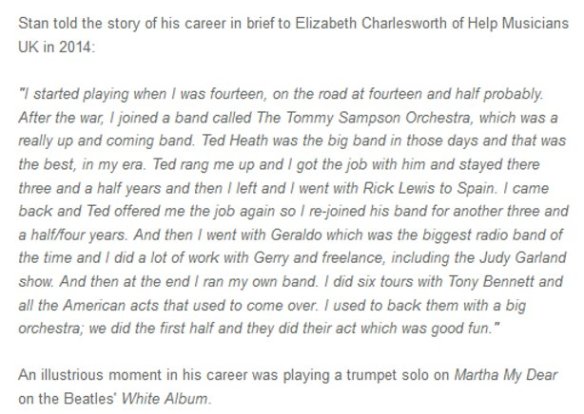
 Humble Pie are an English rock band formed by singer-guitarists Peter Frampton and Steve Marriott in Moreton, Essex, in 1969. Often regarded as one of the first supergroups in music, Humble Pie experienced moderate popularity and commercial success during the 1970s with songs such as “Black Coffee”, “30 Days in the Hole”, “I Don’t Need No Doctor”, “Hot ‘n’ Nasty”, and “Natural Born Bugie” among others. The original line-up featured lead singer and guitarist Steve Marriott from Small Faces, singer and guitarist Peter Frampton from the Herd, former Spooky Tooth bassist Greg Ridley and a 17-year-old drummer, Jerry Shirley, from the Apostolic Intervention.(wikipedia)
Humble Pie are an English rock band formed by singer-guitarists Peter Frampton and Steve Marriott in Moreton, Essex, in 1969. Often regarded as one of the first supergroups in music, Humble Pie experienced moderate popularity and commercial success during the 1970s with songs such as “Black Coffee”, “30 Days in the Hole”, “I Don’t Need No Doctor”, “Hot ‘n’ Nasty”, and “Natural Born Bugie” among others. The original line-up featured lead singer and guitarist Steve Marriott from Small Faces, singer and guitarist Peter Frampton from the Herd, former Spooky Tooth bassist Greg Ridley and a 17-year-old drummer, Jerry Shirley, from the Apostolic Intervention.(wikipedia)









 A nearly forgotten singer/songwriter of the ’60s, Tim Rose’s early work bore a strong resemblance to another Tim working in Greenwich Village around 1966-1967 — Tim Hardin. Rose also favored a throaty blues folk-rock style with pop production flourishes, though he looked to outside material more, wasn’t quite in Hardin’s league as a singer or songwriter, and had a much harsher, even gravelly vocal tone. Before beginning a solo career, Rose had sung with Cass Elliott in the folk trio the Big Three a few years before she joined the Mamas and the Papas. Signed by Columbia in 1966, his 1967 debut album (which actually included a few previously released singles) is considered by far his most significant work.
A nearly forgotten singer/songwriter of the ’60s, Tim Rose’s early work bore a strong resemblance to another Tim working in Greenwich Village around 1966-1967 — Tim Hardin. Rose also favored a throaty blues folk-rock style with pop production flourishes, though he looked to outside material more, wasn’t quite in Hardin’s league as a singer or songwriter, and had a much harsher, even gravelly vocal tone. Before beginning a solo career, Rose had sung with Cass Elliott in the folk trio the Big Three a few years before she joined the Mamas and the Papas. Signed by Columbia in 1966, his 1967 debut album (which actually included a few previously released singles) is considered by far his most significant work.









 Orange Peel: Founded in Hanau, Germany in 1968 – Disbanded in 1971
Orange Peel: Founded in Hanau, Germany in 1968 – Disbanded in 1971






 James Marshall “Jimi” Hendrix (born Johnny Allen Hendrix; November 27, 1942 – September 18, 1970) was an American guitarist, songwriter and singer. Although his mainstream career spanned only four years, he is widely regarded as the greatest and one of the most influential electric guitarists in the history of popular music, and one of the most celebrated musicians of the 20th century.
James Marshall “Jimi” Hendrix (born Johnny Allen Hendrix; November 27, 1942 – September 18, 1970) was an American guitarist, songwriter and singer. Although his mainstream career spanned only four years, he is widely regarded as the greatest and one of the most influential electric guitarists in the history of popular music, and one of the most celebrated musicians of the 20th century.










 Iron Butterfly is an American rock band formed in San Diego, California, in 1966. They are best known for the 1968 hit “In-A-Gadda-Da-Vida”, providing a dramatic sound that led the way towards the development of hard rock and heavy metal music. Although their heyday was the late 1960s, the band has been reincarnated with various members with varying levels of success with no new recordings since 1975. Their second album, In-A-Gadda-Da-Vida (1968), remains a best-seller, and Iron Butterfly was the first group to receive an In-House platinum album award from Atlantic Records. Their music has found a significant impact on the international rock scenes, influencing numerous acts such as Black Sabbath, AC/DC, Rush, Alice Cooper, Mountain, Uriah Heep, Soundgarden, Stone Temple Pilots, Slayer, and Queens of the Stone Age. (wikipedia)
Iron Butterfly is an American rock band formed in San Diego, California, in 1966. They are best known for the 1968 hit “In-A-Gadda-Da-Vida”, providing a dramatic sound that led the way towards the development of hard rock and heavy metal music. Although their heyday was the late 1960s, the band has been reincarnated with various members with varying levels of success with no new recordings since 1975. Their second album, In-A-Gadda-Da-Vida (1968), remains a best-seller, and Iron Butterfly was the first group to receive an In-House platinum album award from Atlantic Records. Their music has found a significant impact on the international rock scenes, influencing numerous acts such as Black Sabbath, AC/DC, Rush, Alice Cooper, Mountain, Uriah Heep, Soundgarden, Stone Temple Pilots, Slayer, and Queens of the Stone Age. (wikipedia)
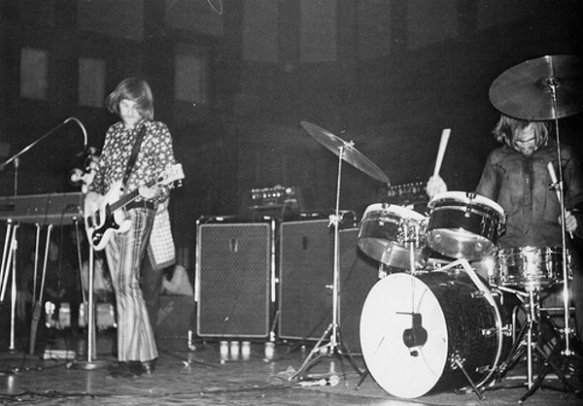





 More from Iron Butterfly in this blog:
More from Iron Butterfly in this blog: The official website:
The official website:
 Roger Keith “Syd” Barrett (6 January 1946 – 7 July 2006) was an English singer, guitarist and songwriter who co-founded the rock band Pink Floyd in 1965.
Roger Keith “Syd” Barrett (6 January 1946 – 7 July 2006) was an English singer, guitarist and songwriter who co-founded the rock band Pink Floyd in 1965.










 Creedence Clearwater Revival, commonly abbreviated as CCR, was an American rock band formed in El Cerrito, California. The band initially consisted of lead vocalist, lead guitarist, and primary songwriter John Fogerty, his brother, rhythm guitarist Tom Fogerty, bassist Stu Cook, and drummer Doug Clifford. These members had played together since 1959, first as the Blue Velvets and later as the Golliwogs, before settling on Creedence Clearwater Revival in 1967. The band’s most prolific and successful period between 1969 and 1971 produced fourteen consecutive top 10 singles (many of which were double A-sides) and five consecutive top 10 albums in the United States – two of which, Green River (1969) and Cosmo’s Factory (1970), reached number one. The band performed at the 1969 Woodstock festival in Upstate New York, and was the first major act signed to appear there.
Creedence Clearwater Revival, commonly abbreviated as CCR, was an American rock band formed in El Cerrito, California. The band initially consisted of lead vocalist, lead guitarist, and primary songwriter John Fogerty, his brother, rhythm guitarist Tom Fogerty, bassist Stu Cook, and drummer Doug Clifford. These members had played together since 1959, first as the Blue Velvets and later as the Golliwogs, before settling on Creedence Clearwater Revival in 1967. The band’s most prolific and successful period between 1969 and 1971 produced fourteen consecutive top 10 singles (many of which were double A-sides) and five consecutive top 10 albums in the United States – two of which, Green River (1969) and Cosmo’s Factory (1970), reached number one. The band performed at the 1969 Woodstock festival in Upstate New York, and was the first major act signed to appear there.










